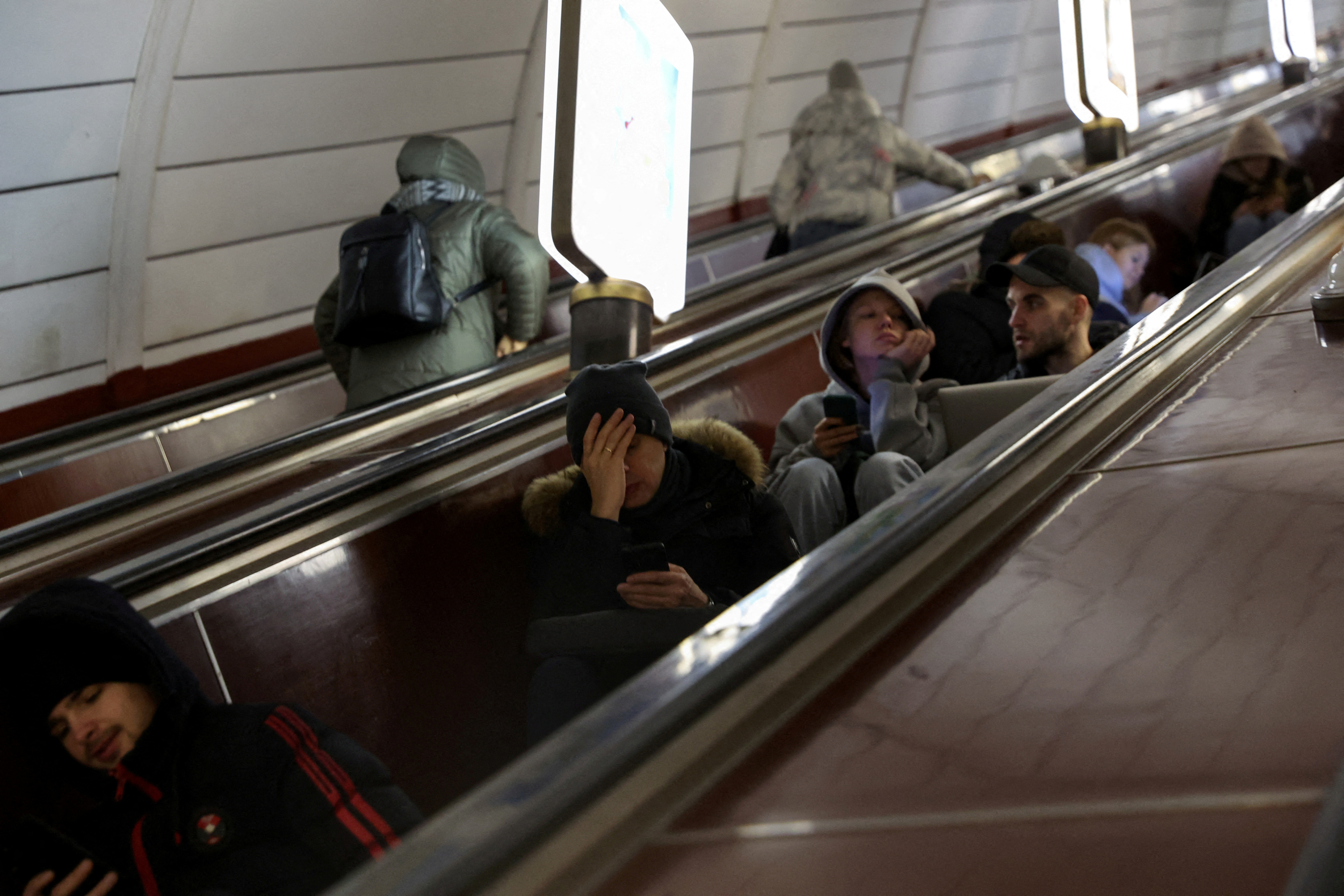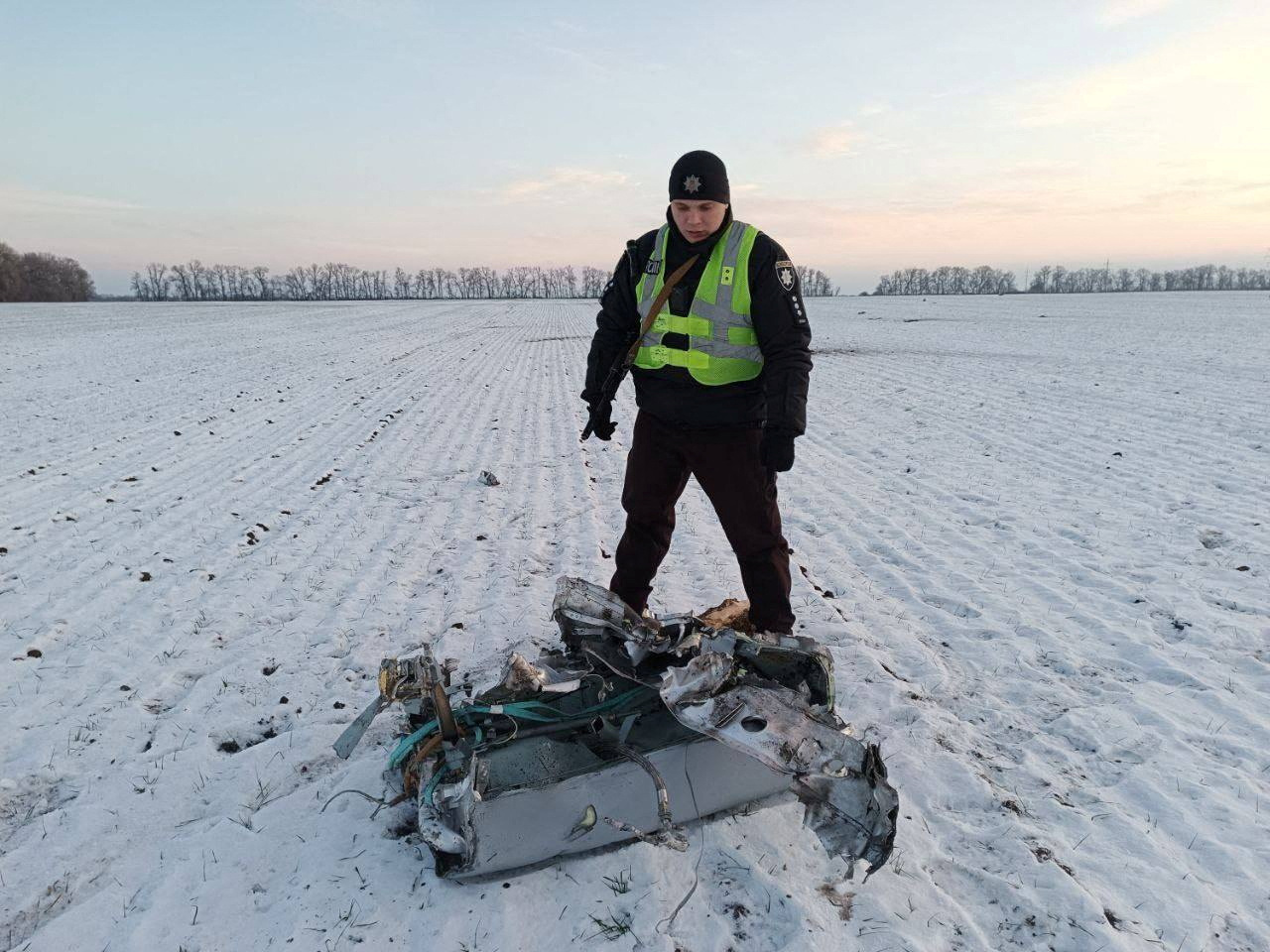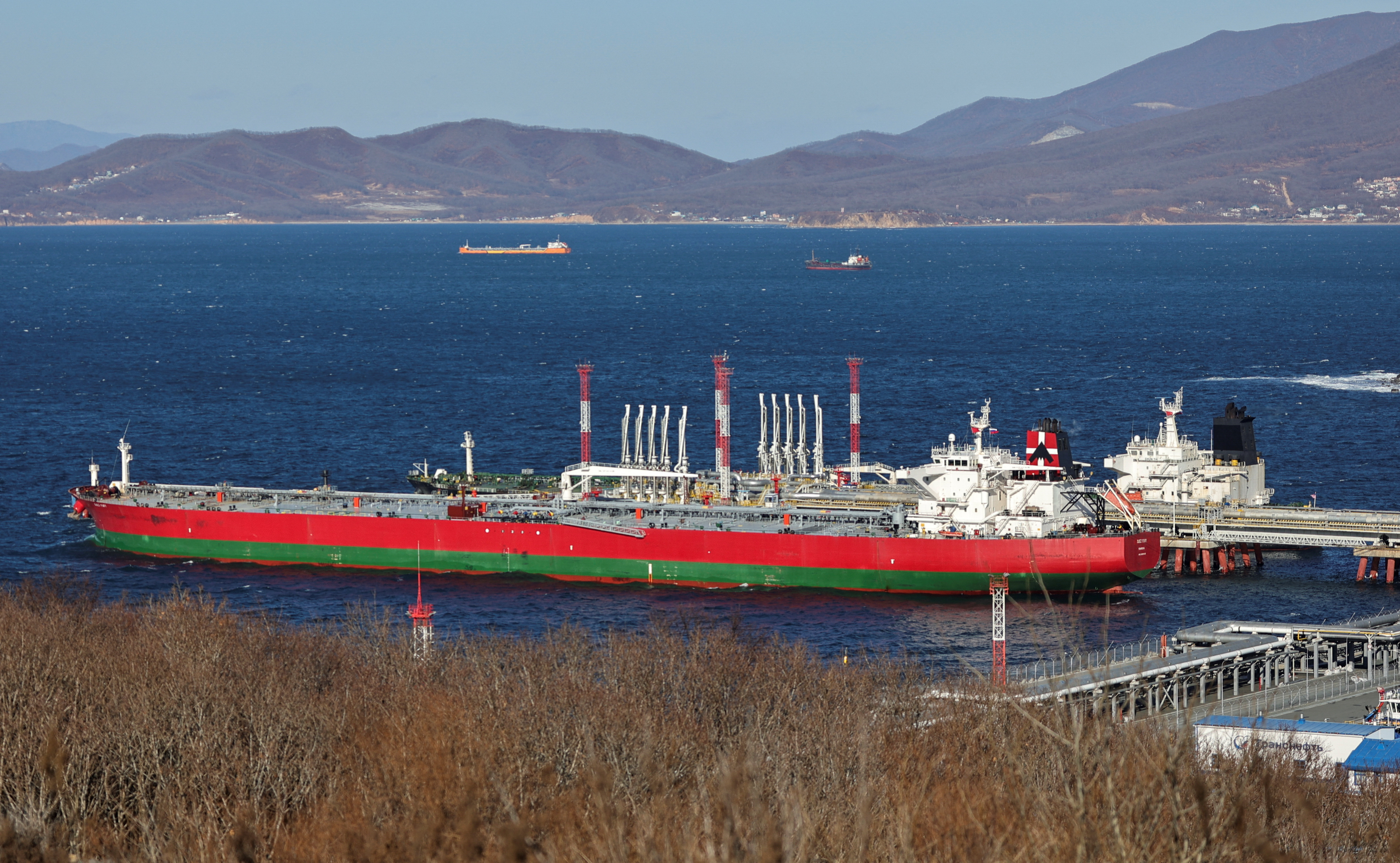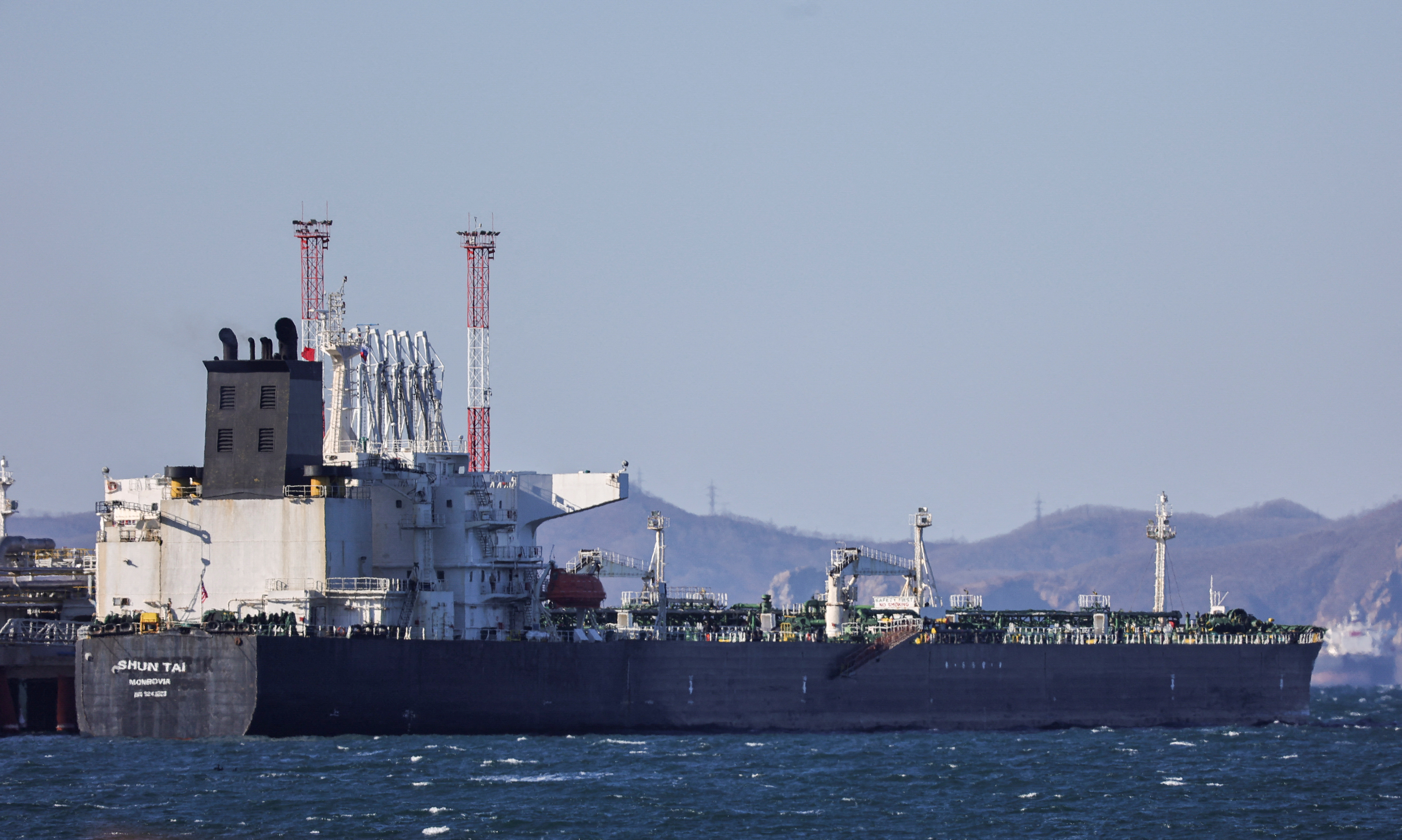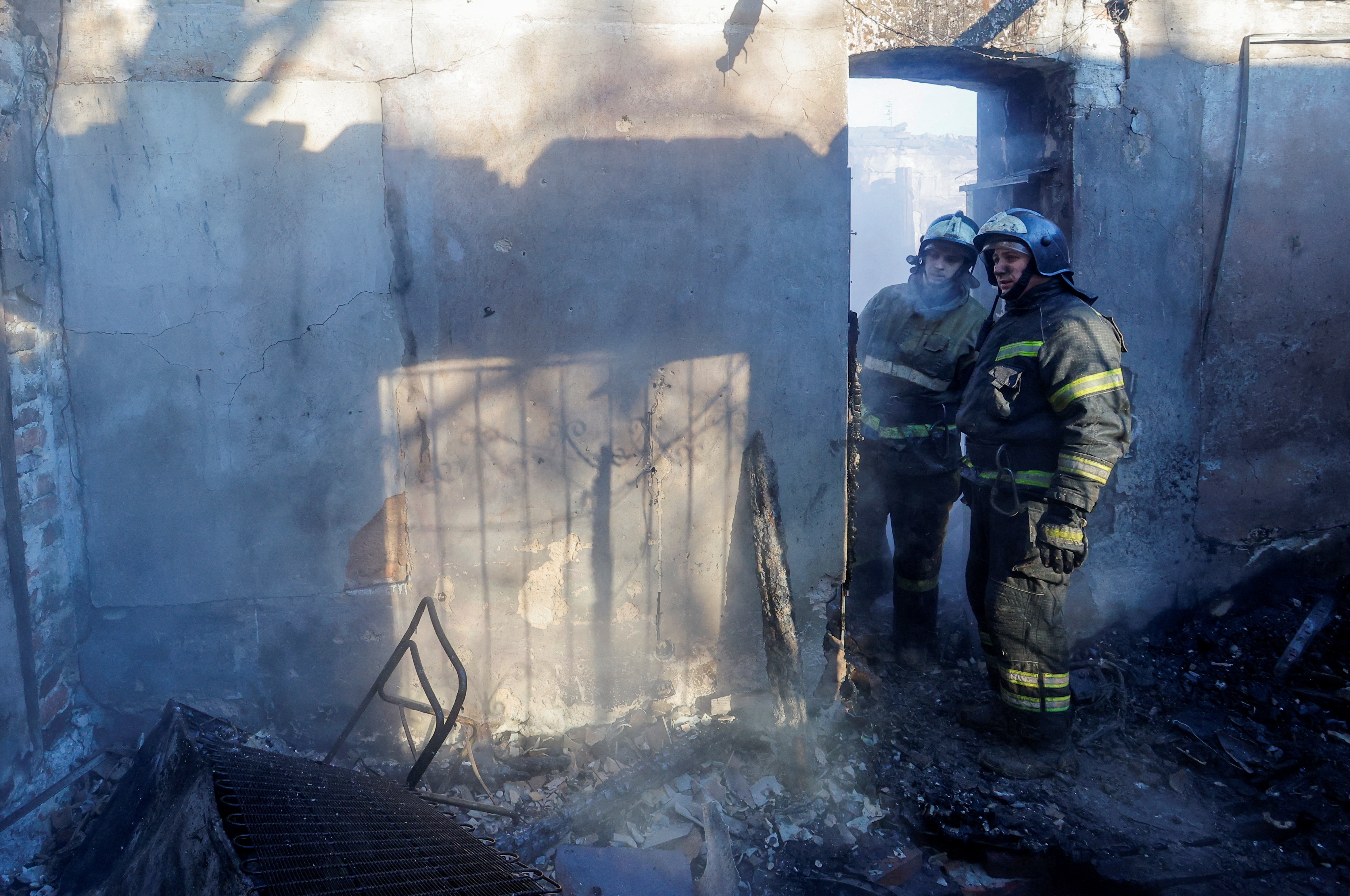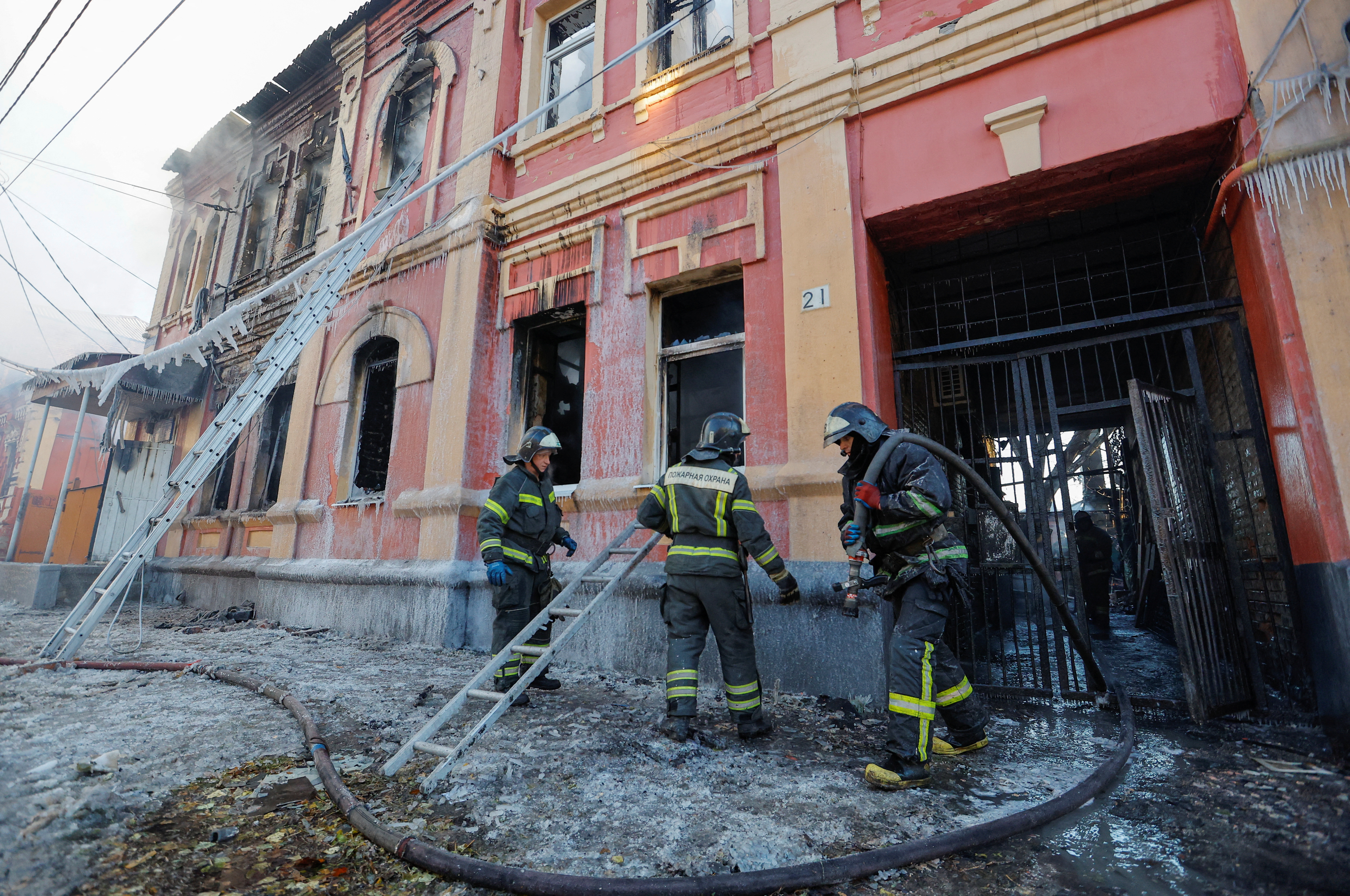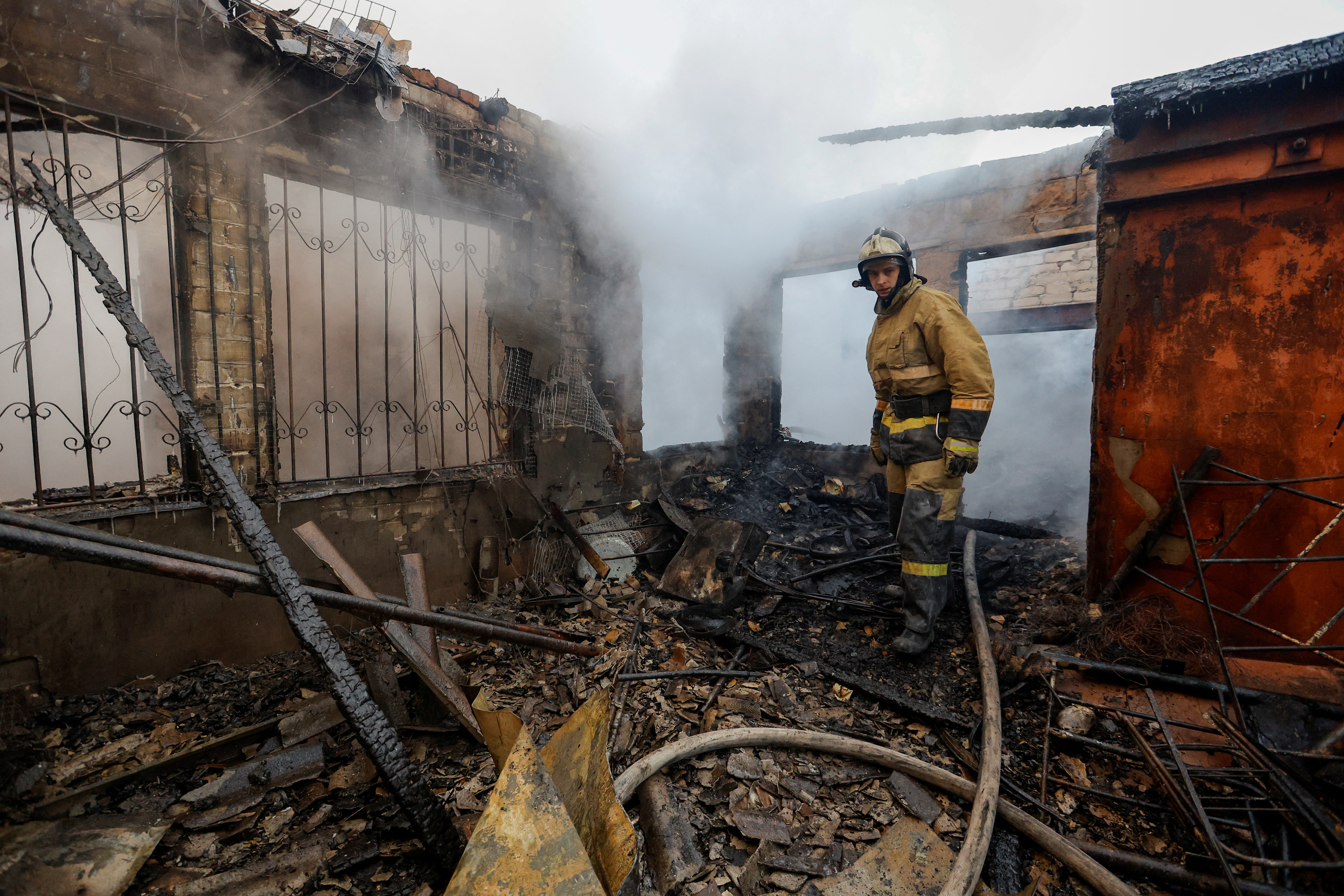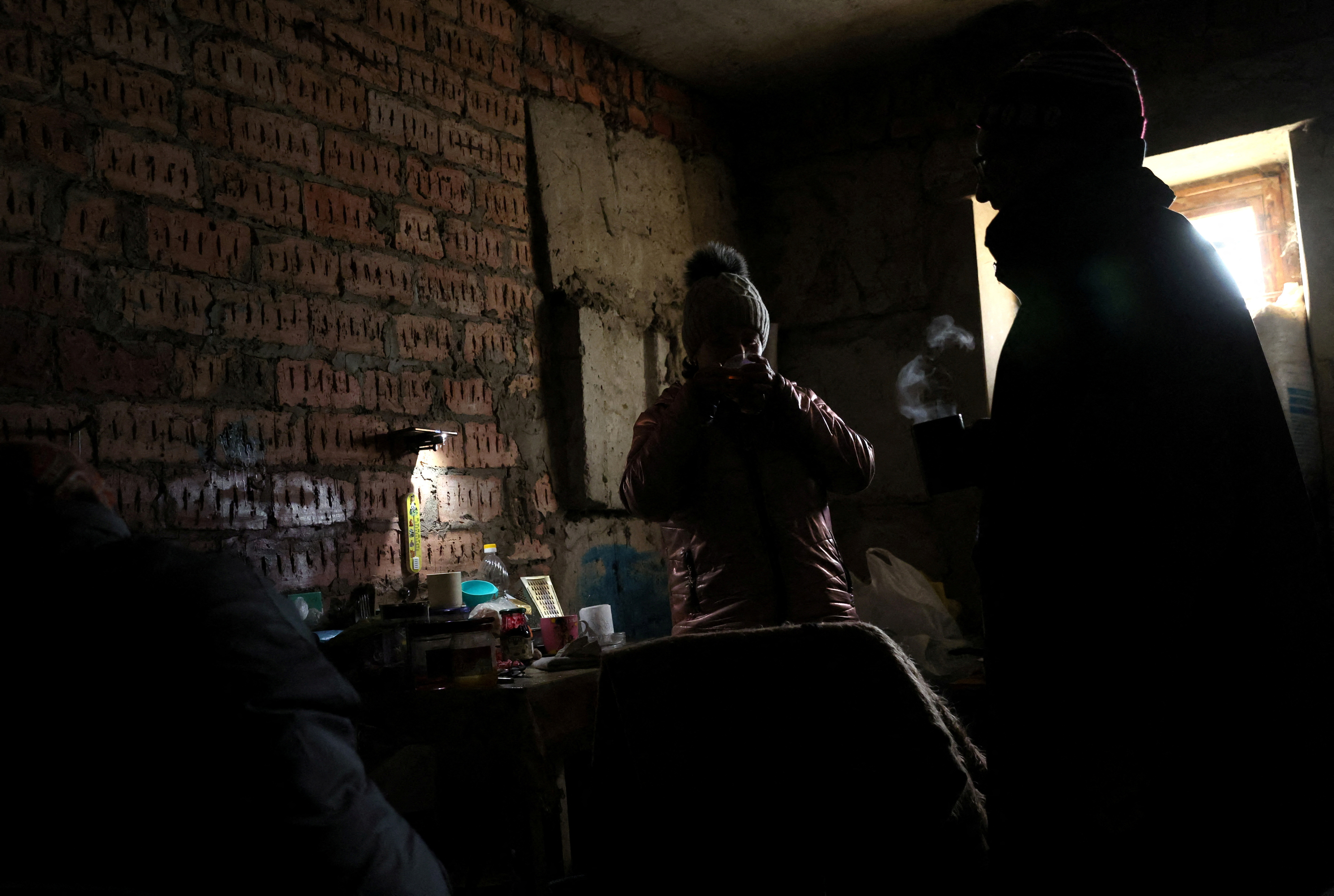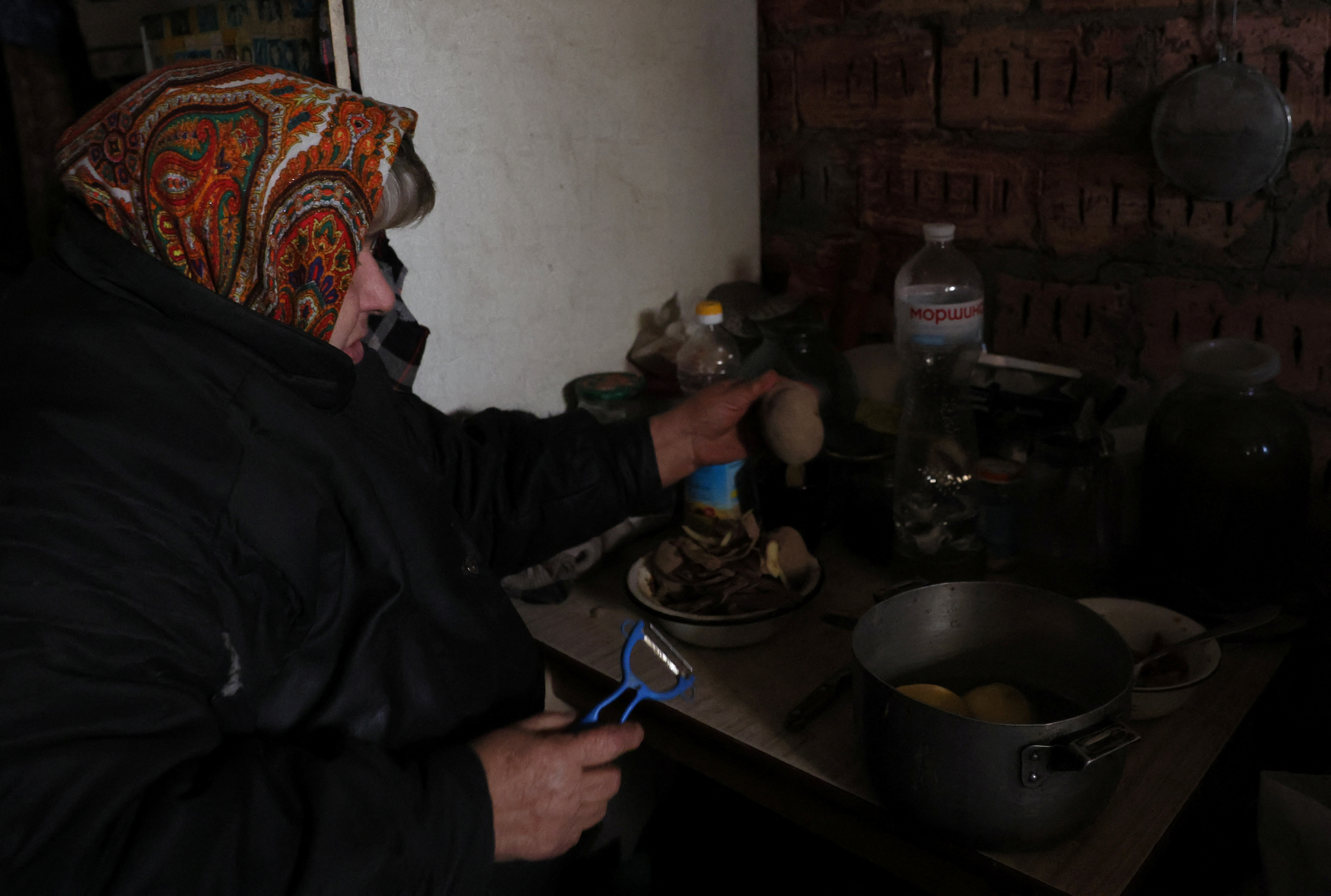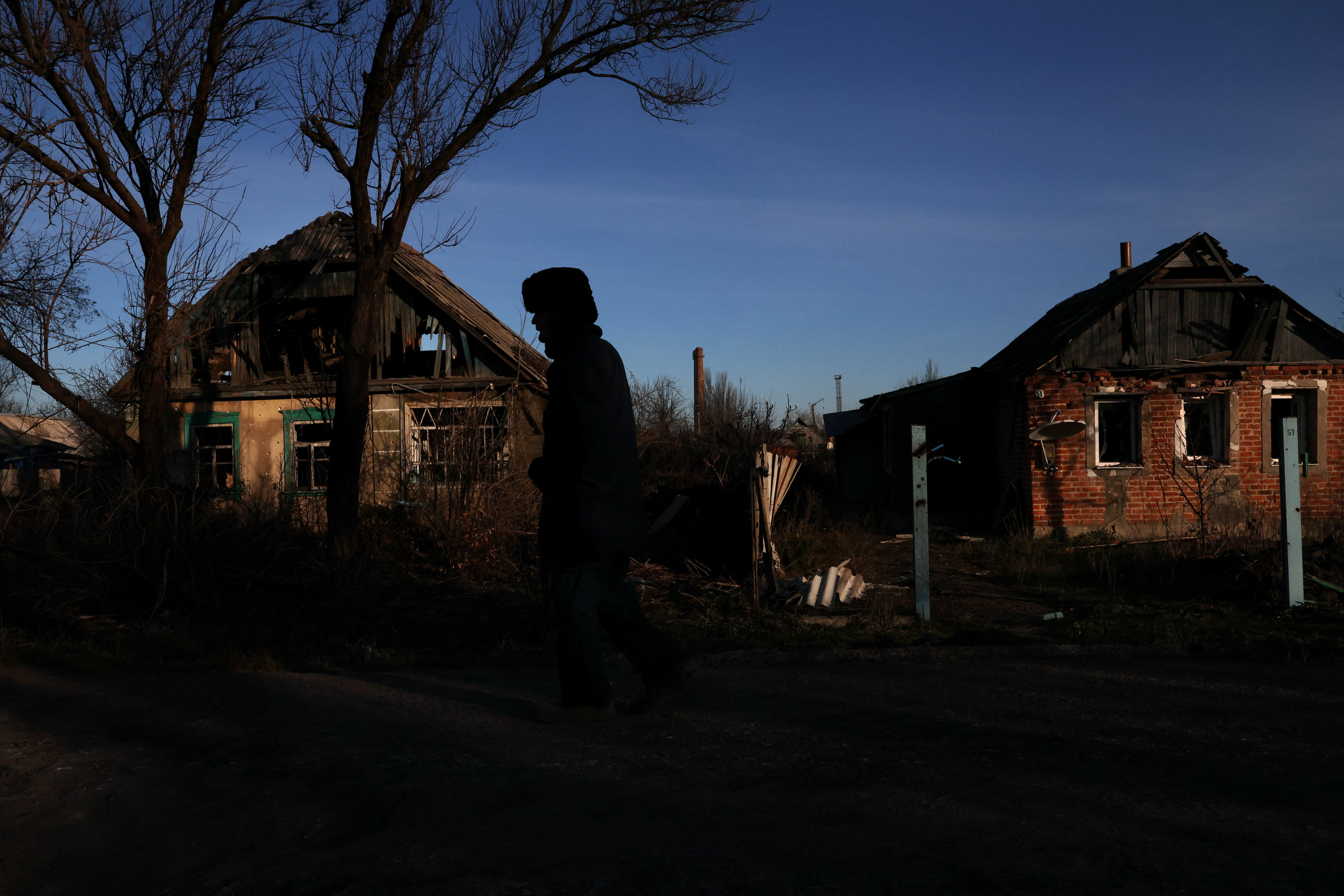Ukraine said Russia destroyed homes in the southeast and knocked out power in many areas with a new volley of missiles on Monday, while Moscow said Ukrainian drones had attacked two air bases deep inside Russia hundreds of miles from frontlines.
A new missile barrage had been anticipated in Ukraine for days and it took place just as emergency blackouts were due to end, with previous damage repaired. The strikes plunged parts of Ukraine back into freezing darkness with temperatures now firmly below zero. However Kyiv said it shot down most of the missiles.
At least two people were killed in Russian attacks in Ukraine’s southern Zaporizhzhia region, Kyiv said.
Meanwhile, Ukrainian drones attacked two air bases at Ryazan and Saratov in south-central Russia, killing three servicemen, wounding four and damaging two aircraft, Russia’s defence ministry said.
Ukraine did not directly claim responsibility for the attacks. If it was behind them, they would be the deepest inside the Russian heartland since Moscow invaded Ukraine on Feb. 24.
One of the targets, the Engels air base near the city of Saratov, around 730 km (450 miles) southeast of Moscow, houses bomber planes belonging to Russia’s strategic nuclear forces.
“The Kyiv regime, in order to disable Russian long-range aircraft, made attempts to strike with Soviet-made unmanned jet aerial vehicles at the military airfields Dyagilevo, in the Ryazan region, and Engels, in the Saratov region,” the Russian defence ministry said.
It said the drones, flying at low altitude, were intercepted by air defences and shot down, with the wreckage causing light damage to two aircraft. The deaths were reported on the Ryazan base, 185 km (115 miles) southeast of Moscow.
The Russian defence ministry called the drone strikes a terrorist act aimed at disrupting its long-range aviation.
Despite that, it said, Russia responded with a “massive strike on the military control system and related objects of the defences complex, communication centres, energy and military units of Ukraine with high-precision air- and sea-based weapons” in which it said all 17 designated targets were hit.
Ukraine said it shot down more than 60 of more than 70 missiles fired by Russia on Monday – the latest in weeks of attacks targeting its critical infrastructure that have cut off power, heat and water to many parts of the country.
Kyiv’s forces have demonstrated an increasing ability to hit strategic Russian targets far beyond the 1,100 km-long frontline in south and eastern Ukraine.
Saratov is at least 600 km from the nearest Ukrainian territory. Russian commentators said on social media that if Ukraine could strike that far inside Russia, it might also be capable of hitting Moscow.
Previous mysterious blasts damaged arms stores and fuel depots in regions near Ukraine and knocked out at least seven warplanes in Crimea, the Black Sea peninsula annexed by Russia from Ukraine in 2014.
President Vladimir Putin drove a Mercedes across the bridge linking southern Russia to Crimea on Monday, less than two months since that, too, was hit by an explosion.
Kyiv has not claimed responsibility for any of the blasts, saying only that they were “karma” for Russia’s invasion.
“If something is launched into other countries’ air space, sooner or later unknown flying objects will return to (their) departure point,” Ukrainian presidential adviser Mykhailo Podolyak tweeted, tongue in cheek, on Monday.
Moscow has been hitting Ukraine’s energy infrastructure roughly weekly since early October as it has been forced to retreat on some battlefronts.
This time, police in Moldova were reported to have found missile fragments on its soil near the border with Ukraine.
In Zaporizhzhia region, at least two people were killed and several houses destroyed, the deputy head of the presidential office, Kyrylo Tymoshenko, said.
Missiles also hit energy facilities in the regions of Kyiv and Vinnytsia in central Ukraine, Odesa in the south and Sumy in the north, officials said.
Forty percent of the Kyiv region had no electricity, regional governor Oleksiy Kuleba said, praising the work of Ukrainian air defences.
Air defences shot down more than 60 of over 70 Russian missiles fired on Monday, Ukraine’s air force command said. This included nine out of 10 missiles fired at Kyiv, officials said.
“Our guys are awesome,” Andriy Yermak, head of the Ukrainian presidential staff, wrote on Telegram.
Russian news agencies quoted Moscow’s defence ministry as saying Russian missiles hit 17 targets in Ukraine.
Energy workers had already begun work on restoring power supplies, President Volodymyr Zelenskiy said.
Ukraine had only just returned to scheduled power outages from Monday rather than the emergency blackouts it has suffered since widespread Russian strikes on Nov. 23, the worst of the attacks on energy infrastructure that began in early October.
Russia has said the barrages are designed to degrade Ukraine’s military. Ukraine says they are clearly aimed at civilians and thus constitute a war crime.
A $60 per barrel price cap on Russian seaborne crude oil took effect on Monday, the latest Western measure to punish Moscow over its invasion. Russia is the world’s second-largest oil exporter.
The agreement allows Russian oil to be shipped to third-party countries using tankers from G7 and European Union member states, insurance companies and credit institutions, only if the cargo is bought at or below the $60 per barrel cap.
Moscow has said it will not abide by the measure even if it has to cut production. Ukraine wants the cap set lower: Zelenskiy said $60 was too high to deter Russia’s assault.
A Russian oil blend was selling for around $79 a barrel in Asian markets on Monday – almost a third higher than the price cap, according to Refinitiv data and estimates from industry sources.
(This story has been refiled to remove a typo from the headline)
Related Galleries:
